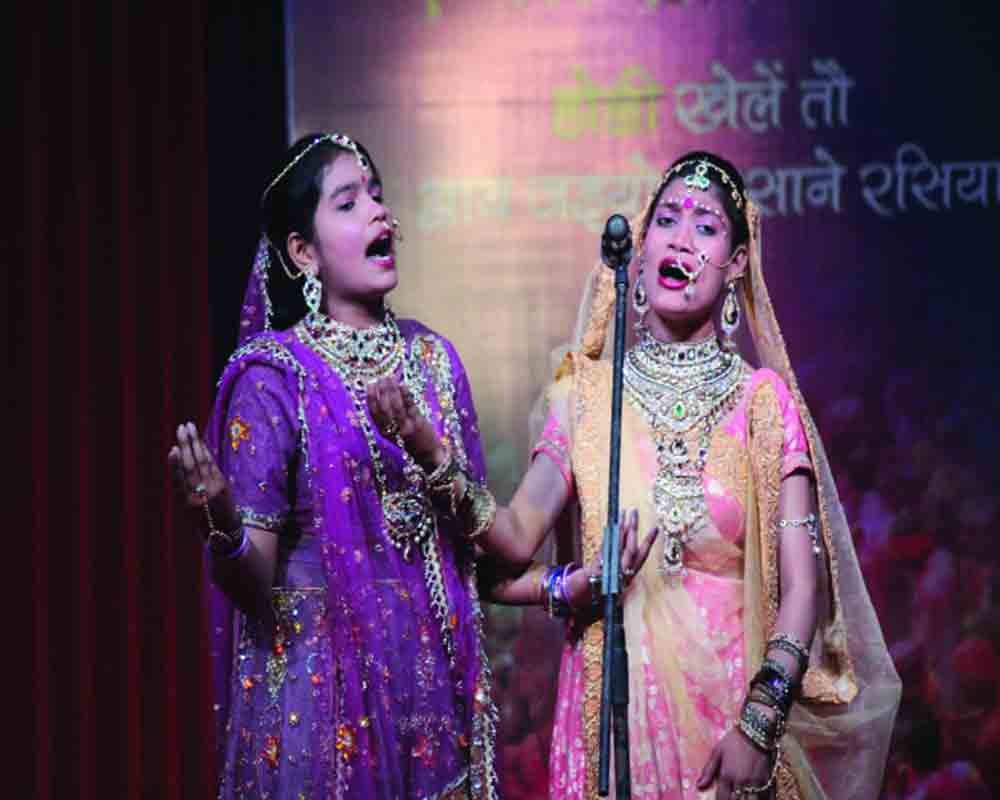To revive Bhagat – the traditional drama – is to revive traditional values and wisdom which are now giving in to the modern modes of entertainment
Agra, a city renowned for the majestic Taj Mahal, is also home to a rich cultural heritage that extends far beyond the iconic monument. One such gem of Agra's cultural tapestry is Bhagat, a traditional form of drama that has deep-rooted historical and cultural significance. Bhagat has, unfortunately, been fading into obscurity over the years, but there are concerted efforts being made to revive this art form and keep it alive for future generations.
Bhagat is a traditional folk theatre that has been performed in Agra and the surrounding regions for centuries. This art form combines elements of music, dance, and drama to tell stories from mythology, history, and everyday life. The performances are characterized by vibrant costumes, traditional musical instruments, and a unique style of storytelling that captivates audiences.
Historically, Bhagat was not just entertainment; it served as a medium for social and cultural expression. It provided a platform for local communities to narrate stories that were integral to their identity, customs, and traditions. The themes often revolved around tales of gods and goddesses, heroes and villains, love and devotion, and the ever-evolving human experience.
While Bhagat thrived for generations, the rise of modern entertainment, changes in audience preferences, and a lack of institutional support led to its decline. As more contemporary forms of entertainment like television, cinema, and the internet became prevalent, Bhagat gradually lost its appeal. With fewer people attending performances and a lack of interest from younger generations, the tradition began to wane.
Recognizing the cultural and historical significance of Bhagat, several initiatives and organisations have taken the initiative to revive this traditional art form. The UP government is also promoting it by organising the Bhagat shows and supporting the actors and people involved. Agra and surrounding regions have started incorporating Bhagat performances into cultural festivals. These festivals draw attention to the art form and create platforms for Bhagat artists to showcase their talents to larger audiences. Agra is a popular tourist destination, and efforts are being made to promote Bhagat as part of the city's cultural tourism. It was recently featured in Agra Mahotsav and drew huge crowds. This not only increases awareness but also provides livelihood opportunities for Bhagat artists.
To speak of its stalwarts credit must go to Khaleefa, the actor, writer and an ardent lover of the art form who single-handedly popularised it by organising Bhagat shows at shoestring budget. Anil Shukla took over from him and today is making concerted efforts to promote it. “What drew me into Bhagat was its appeal to capture masses and deliver the message. To revive it is not just to revive a dying artform but to revive our rich tradition of secularism, inclusivity and values that take us forward in the troubled times,” Says Anil Shukla.
Reviving Bhagat is a challenging endeavour, but the efforts being made are a testament to the dedication and commitment of those who value Agra's cultural heritage. With a combination of support from the government, cultural organisations, and the people, there is hope that Bhagat will see a resurgence in the coming years
(The writer is a social activist, based in Uttar Pradesh; views are personal)
























